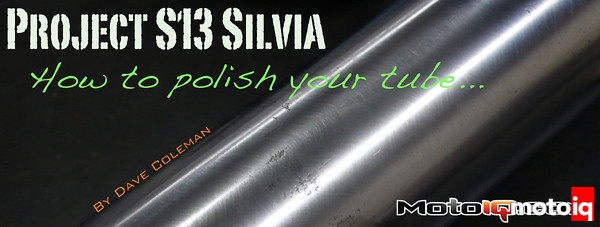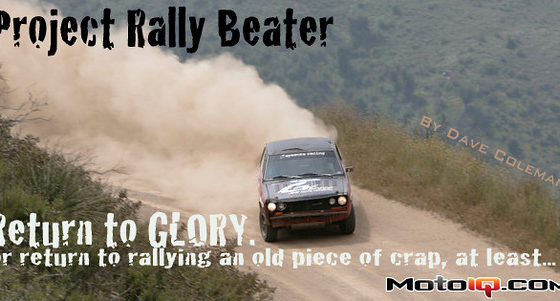
Project Nissan S13 Silvia: How to Polish Your Tube
(or What to do When Your JIC Struts Dry Up)
by Dave Coleman
Engineering a car is a series of compromises. When Nissan decided to make the 240SX a slow, soft piece of suck, it was a compromise calculated to make it durable, quiet, easy to drive every day, and cheap to build. When I decided to take this same worn-out, 300,000-mile piece of suck and make it fast, I was naturally sacrificing some of that comfort and undoubtedly some durability.
I've already shown you why Nissan didn't paint their cars with flat-black spray paint, and why they give you torque specs for their wheel bearings. Now it's time to explore why these cars didn't come with JIC coil-overs from the factory.
Most production cars use squishy rubber bushings instead of hardened steel spherical bearings for all their suspension pivots and shock mounts (The FD RX-7, most EVOs, GT-Rs, quite a few BMWs and even Minis are notable exceptions). It has been suggested many times that the JIC T/C rods, rear camber links and rear toe links that use dry, unsealed spherical bearings instead of squishy bushings would quickly wear out, becoming loose, rattly reminders of why only fools put race parts on street cars.
Six abusive years later, the JIC links are ugly looking, with surface rust poking through the zinc-plating wherever they've been pelted with gravel and track debris, but the predicted wear of their spherical bearings never happened. Functionally, they are every bit as good as when they were new. Score one for JIC.
|
|
| The years have made JIC's control arms rusy and crusty, but functionally, they're still working well. |
Now, what about the coil-overs? Did the dampers themselves hold up to the abuse? What about the camber plates (there are spherical bearings there too, and they're loaded in a way that makes them wear faster) and the threaded perches?
The camber plates are holding up well, still silent and rattle-free. The plating on the threaded shock bodies is also holding up well (better than on the less-imortant control arms) so the perches are still easy to adjust.
The dampers themselves still do their primary job well. There is no leaking and no noticeable degradation of their damping performance. Testing them on the Roehrig shock dyno at Muellerized Suspension Systems, the left and right struts still matched each other well (I never did a baseline test to compare to, but if they had degraded, they were unlikely to degrade in perfect unison.) Unforuntately, the linear bushings that hold the inverted struts and are critical to maintaining the suspension's geometric rigidity have not done as well.
About a year ago, I noticed a burnished spot appearing on the left front strut, accompanied by a slight loss of steering precision and a noticeable looseness when I grabbed the top of the strut body and rocked it in and out. After teardown, it was clear several things had happened. First, the grease seal at the top of the strut body had become overwhelmed with crud and wasn't keeping the grease in and the dirt out as well as it should. Second, the grease seal actually fell off! Like everything on a JIC strut, the grease seal screws onto the threaded strut housing, and it had backed off and slid up the damper body where it was doing nothing at all to keep the bushings clear. I have no idea how long it had been in this condition. Third, it looked like there wasn't all that much grease in there in the first place. And finally, I had done nothing at al to maintain them in the 6 years I had been abusing them.
Lesson learned: JIC struts now come with a dust boot that prevents the dust seal from getting overwhelmed with crud in the first place. In spite of this, John Meuller, who installs a lot of JIC struts, still recommends tearing down new JIC struts and adding additional grease. And finally, like any race part, you need to keep an eye out for wear, for seals falling off, and periodically re-grease the struts. On my SE-R SpecV rally car, I tore down and re-greased the struts every race. On the Silvia, once every 5 years probably would have been enough, especially with the new dust boots and following Mueller's pre-greasing advice.
Now, for the gory details, look at the pretty pictures:
 |
|
These strut bushings appear to be teflon-coated sintered bronze, and the bronze that's showing through here means the teflon is gone and the bushing is wearing. JIC doesn't sell any service parts for their struts, and after nearly a month of searching, it was impossible to find a replacement bushing through any bearing supplier.
|
|
|
|
JIC struts are cleverly built around a standard threaded body. |
|






